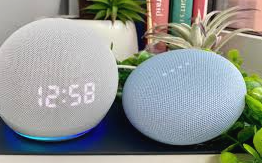Introduction to Smart Speakers
Smart speakers have quickly become a significant part of modern households, bridging the gap between convenience and technology in daily life. Their journey began with basic voice-activated tasks, and over time, these devices have integrated more advanced features that cater to a wide variety of needs. Designed to make life more convenient, they’ve redefined how individuals access information, manage tasks, and connect with other technologies.
These devices offer a hands-free way to interact with the world around us, from controlling smart home gadgets to offering timely reminders. They’ve been developed to be intuitive, adapting to user habits and learning preferences to provide tailored responses. This personalized interaction has set the stage for their role as central hubs within connected households.
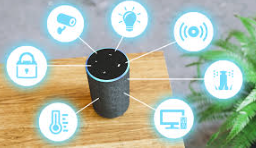
Their integration into various aspects of everyday routines highlights their growing importance. Smart speakers have transitioned from being optional gadgets to tools that simplify and enhance life, catering to everything from entertainment to practical functions. As they continue to evolve, their relevance in modern lifestyles only deepens, offering more than just assistance—they shape how technology fits seamlessly into daily activities.
Technological Advancements by 2026
By 2026, smart speakers will incorporate highly advanced AI capabilities, allowing them to deliver more precise and context-aware responses. These devices will become adept at managing intricate multi-step tasks, improving efficiency for users. With advancements in natural language processing, smart speakers will be better equipped to understand subtleties in human communication, such as tone, intent, and conversational flow. This will create a more seamless and natural user experience, making interactions feel more like conversing with another person rather than a machine.

Another transformative feature will be their ability to predict user needs based on patterns and habits. Leveraging data from previous interactions, smart speakers will proactively suggest relevant actions or reminders, further integrating into the rhythms of everyday life. These predictive capabilities will extend to entertainment, health tracking, and even smart home automation, making the devices indispensable for managing various aspects of personal and professional life.
Smart speakers will also include sophisticated multi-device synchronization, enabling users to interact with several devices at once without needing to repeat commands. This will make controlling interconnected gadgets across rooms effortless. Enhanced machine learning algorithms will ensure the devices continuously improve and adapt to each user over time, offering more tailored assistance as they grow more familiar with individual preferences and behaviors.
Improved Connectivity and Compatibility
The next generation of smart speakers will focus on streamlining how devices communicate and interact within the home. Enhanced connectivity protocols will allow these devices to seamlessly integrate with an ever-growing array of smart technologies, making it easier for users to create a cohesive network of interconnected systems. By leveraging advancements in wireless communication standards, smart speakers will ensure faster and more reliable connections, reducing latency and improving performance across all linked devices.
One of the most notable improvements will be the ability to support cross-platform functionality, enabling smart speakers to work effortlessly with various brands and operating systems. This increased compatibility will remove the frustration of managing devices that previously required specific hubs or proprietary apps, giving users more flexibility to choose technologies that suit their individual needs. Whether it’s managing home appliances, accessing entertainment systems, or syncing personal devices, this universal approach will simplify device management like never before.
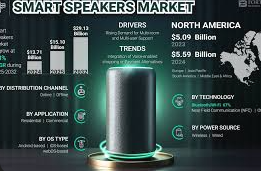
Smart speakers will also enable more dynamic interactions with multiple devices at once, creating a coordinated environment where commands can trigger complex, multi-device actions. For example, a simple voice command could simultaneously adjust lighting, lower window shades, and play a specific playlist in sync. This streamlined functionality will redefine convenience by eliminating the need for separate commands for each device, giving users greater control over their environment in a single, intuitive interaction.
These devices will also incorporate better integration with external networks, such as cloud-based services, to enhance their utility. By syncing with cloud storage or subscription services, smart speakers will provide access to important files, documents, or entertainment content without requiring direct input from users. Moreover, they will feature improved algorithms to maintain stability and performance, even when handling multiple simultaneous requests or complex processes across various devices.
For households with multiple smart speakers, advancements in connectivity will allow them to function cohesively as part of a synchronized system. This means users will be able to issue a command to any one speaker, and the action will take place throughout the home without duplication or miscommunication between devices. This level of integration will make managing smart home ecosystems more intuitive and responsive to user needs.
Additionally, updates to voice recognition technologies will enable smarter allocation of tasks across devices, ensuring the most appropriate gadget responds to a command based on its location and capabilities. These advancements will support a smoother and more personalized experience, reducing the potential for conflicts between devices and ensuring that smart speakers remain efficient and reliable components of a connected home.
Privacy and Security Enhancements
As the capabilities of smart speakers expand, ensuring the protection of sensitive information becomes increasingly critical. By 2026, these devices will adopt cutting-edge security measures to address evolving threats and give users greater control over their personal data. One of the key advancements will be the integration of on-device processing, which minimizes the need to transmit data to external servers. This approach enhances security by keeping user interactions more localized, reducing exposure to potential breaches or unauthorized access.
Enhanced biometric authentication methods, such as voice recognition or multi-user profiles, will further improve data protection. These features will ensure that only authorized individuals can access specific functions or retrieve sensitive information through the device. Such measures will not only safeguard privacy but also make smart speakers more adaptable for multi-user households, where different members have unique preferences or access requirements.
Transparency will be another area of significant progress. Manufacturers will introduce more intuitive privacy dashboards, allowing users to clearly understand and manage what data is being collected and how it is utilized. This level of visibility empowers users to make informed decisions about their settings without feeling overwhelmed by overly technical processes. Consent mechanisms will also become more robust, requiring explicit approval for any data-sharing activities while providing easy options for users to revoke permissions at any time.
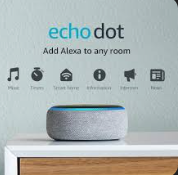
Advancements in encryption will be pivotal in securing communication between smart speakers and other connected devices. By using end-to-end encryption protocols, these devices will protect data transmissions from potential interception, ensuring a safer environment for users to engage with their smart ecosystems. Automated system updates will also play a critical role, ensuring that the latest security patches are installed without requiring manual intervention, which can sometimes leave vulnerabilities unaddressed.
To address concerns about accidental activation or unintended data collection, smart speakers will offer enhanced voice sensitivity settings. These adjustments will ensure the devices only respond to intentional prompts, preventing unnecessary recording or processing of conversations. Offline modes, where smart speakers operate without relying on cloud services, will provide additional privacy options for those who prefer more controlled interactions.
Industry-wide standards and certifications will also gain prominence, helping consumers identify devices that meet stringent privacy and security criteria. These benchmarks will make it easier to distinguish between products that prioritize data protection and those that fall short, fostering greater trust between users and manufacturers. As these efforts align with consumer expectations, smart speakers will be better positioned to deliver advanced functionality without compromising personal security.
Expanding Use Cases and Applications
Smart speakers are poised to transform how people engage with technology across various aspects of daily life. In classrooms, they will act as interactive learning tools, assisting students with research, answering questions, and supporting skill development through engaging exercises. By incorporating voice-based interfaces and personalized feedback, smart speakers will enhance educational experiences for learners of all ages. They will also support language learning and tutoring through real-time pronunciation corrections and conversational practice, making education more accessible and dynamic.
In professional environments, smart speakers will integrate seamlessly with workplace systems to streamline productivity. They will handle tasks like scheduling meetings, managing task lists, and sending reminders with minimal input, allowing professionals to focus on more critical activities. These devices will also assist with virtual collaboration by integrating with video conferencing platforms and providing voice-activated navigation for shared files or project updates. In hybrid or remote work settings, they will enhance workflow efficiency by offering hands-free access to tools and information needed for completing tasks quickly and effectively.
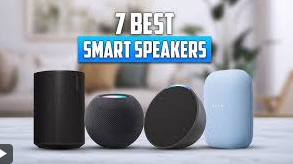
The entertainment potential of smart speakers will continue to grow, with advances in interactive storytelling, music curation, and gaming experiences. They will personalize content recommendations based on user preferences, creating more engaging and immersive entertainment options. With the ability to sync with other smart devices, they will deliver synchronized audio experiences, whether for a home theater setup or multi-room music playback. Smart speakers will also serve as tools for exploring new forms of interactive media, allowing users to influence storylines or gameplay through voice commands.
Moreover, these devices will play an increasing role in wellness and lifestyle management. They will guide users through fitness routines, assist with meditation exercises, and offer health insights by syncing with wearable devices or other health-monitoring tools. This functionality will make them valuable companions for those seeking to improve physical and mental well-being.
In retail and commerce, smart speakers will facilitate shopping by enabling voice-based ordering and providing product recommendations tailored to user preferences and purchase history. They will simplify price comparisons and offer real-time updates on deals or availability, transforming the shopping experience. Businesses will also utilize them to improve customer service through AI-powered virtual assistants that handle inquiries efficiently and effectively.
Eco-friendly and Sustainable Designs
The growing focus on sustainability is driving innovations in how smart speakers are designed and manufactured. By 2026, these devices will incorporate eco-conscious practices throughout their lifecycle, addressing both production and usage to reduce environmental impact. Manufacturers will increasingly turn to materials that are biodegradable or derived from recycled sources, ensuring that the devices leave a smaller footprint once they reach the end of their use. Efforts to reduce non-recyclable components in packaging will further align these products with consumer expectations for greener technology.
Energy efficiency will play a key role in making smart speakers more environmentally friendly. With advancements in power management, these devices will require less energy to operate, without compromising their functionality or performance. Smart energy-saving modes will allow users to reduce consumption during periods of inactivity, while intelligent systems will adjust energy usage based on specific tasks. This approach not only helps lower household energy bills but also supports global initiatives to conserve resources and combat climate change.
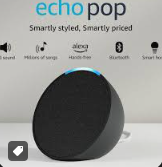
Durability will also become a priority for future smart speaker designs, extending their lifespan and minimizing electronic waste. Devices will be engineered with modular components, allowing for easier repairs or upgrades instead of replacement. This shift towards longer-lasting products will enable users to maintain and update their devices with minimal effort, reducing the need for frequent disposal and replacement.
Additionally, many companies will adopt transparent sustainability practices, providing detailed insights into the environmental impact of their products. Labels highlighting carbon footprints, energy efficiency ratings, and material sources will help consumers make informed purchasing decisions. By embracing these measures, manufacturers can foster greater trust and loyalty among environmentally conscious users.
Collaborations with environmental organizations will also shape the future of smart speaker production. Through partnerships, companies will work to implement circular economy principles, where materials from outdated or damaged devices can be efficiently recycled and reintegrated into the production cycle. This will further reduce waste while promoting a culture of reuse and resourcefulness.
To complement their eco-friendly features, these devices will encourage sustainable habits in users. Smart speakers will provide insights on energy usage, deliver tips for reducing waste, and integrate with other green technologies, such as solar-powered systems or energy monitoring devices, to promote eco-conscious living. By offering both practical functionality and environmental benefits, smart speakers will evolve into tools that not only enhance daily life but also align with global efforts to create a more sustainable future. Through thoughtful design and responsible production practices, the smart speakers of 2026 will represent a meaningful step toward balancing technology with environmental stewardship.
